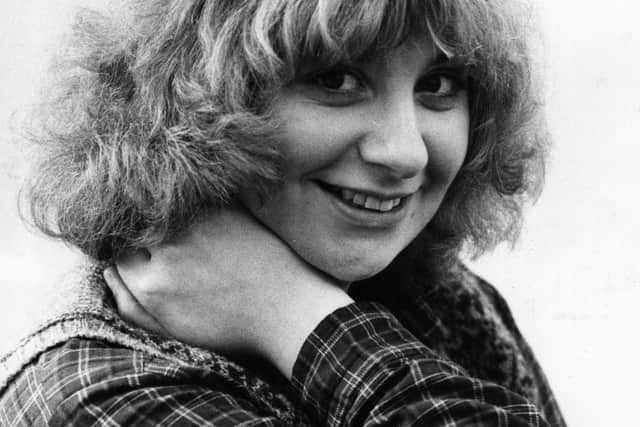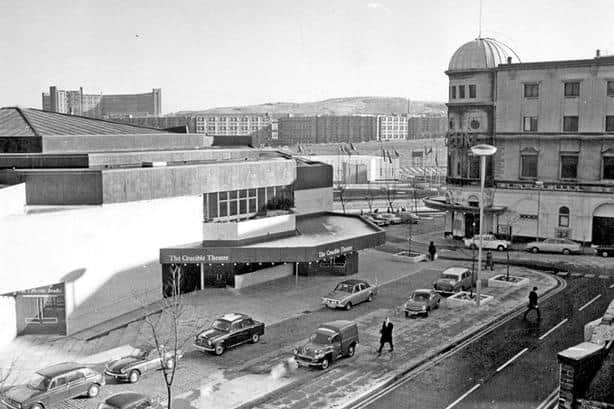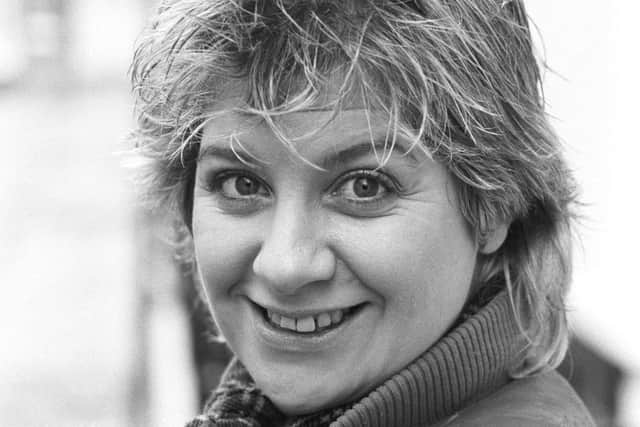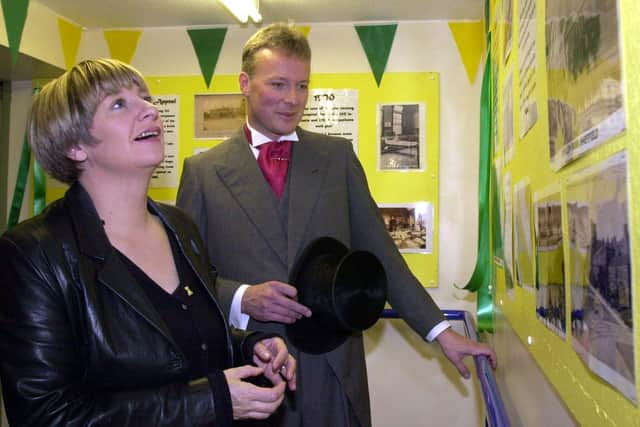New book reveals how Sheffield made comedy legend Victoria Wood a star – here's how it happened
and live on Freeview channel 276
But a new authorised biography documents how it was Sheffield that first put Wood truly on the map and offered her a springboard for future success as a writer of witty dialogue.
Journalist Jasper Rees’ book, titled Let’s Do It in a nod to Wood’s well-known song The Ballad of Barry and Freda, explains how Wood was commissioned in 1978 to write her debut play for the Crucible Theatre.
Advertisement
Hide AdAdvertisement
Hide AdShe had already appeared on television talent contest New Faces, and sang humorous self-composed piano numbers on BBC One series That’s Life, but was not yet a household name.


The Crucible, Rees says, was ‘suddenly awash with money’ from hosting the World Snooker Championship, so its artistic director Peter James asked his associate David Leland to spend some of the funds on new writing. Wood was approached following a well-received appearance in a topical revue called In At The Death, produced at the small Bush Theatre, located above a pub in west London.
She quickly came up with the idea of a play inspired by her own knowledge of ‘the creeps that hang around talent contests’. Set in a northern cabaret club called Bunter’s, the show – titled Talent – focuses on ‘an aspiring singer who is desperate to escape a future of marital drudgery’, says Rees.
Wood named the character Julie after her friend and fellow actor Julie Walters, whom she would collaborate with many times in the years to come.
Advertisement
Hide AdAdvertisement
Hide AdThe fictional Julie, who can perform a powerful impersonation of Shirley Bassey, brings along her ‘prudish sidekick’ Maureen to Bunter’s for ‘moral support’.


"I knew those girls and I remember what they were like,” Wood later said. “I put a lot of my own feelings of being uncomfortable in the world into Maureen and lot of my excitement about being in showbusiness into Julie.”
Wood played Maureen at the Crucible, while the part of Julie was taken by Hazel Clyne, as Leland wanted to use his own company of actors and Walters was committed to a Shakespeare season at the Bristol Old Vic.
“Talent was the final new play of the season,” Rees writes. “When the opening night in the Studio theatre came round in November, from the moment Maureen and Julie fumbled onstage in the dark, the dialogue’s zingers were met by waves of laughter.”


Advertisement
Hide AdAdvertisement
Hide AdThe Guardian newspaper praised Talent, saying it was ‘very funny’ in a subsequent review, and the production continued into December before transferring to London. As the play was only 80 minutes long, it formed part of a double bill in Sheffield – Wood put on a solo comedy set in the second half and her then husband-to-be Geoffrey Durham, a magician known as his alter ego the Great Soprendo, did tricks for the audience.
On one occasion, Peter Eckersley, the head of drama at Granada Television, visited the Crucible to see Talent, which led to the play getting commissioned for TV. It was shown on ITV in August 1979, this time with Walters in the role of Julie.
"The next morning she took the phone off the hook in order to write and, down to her last 40p, she didn’t have money to buy the papers, so she was initially unaware of the overnight applause,” Rees writes, saying she experienced ‘sudden celebrity’.
“Having craved fame from childhood, at first Victoria was alarmed that it had finally happened and for two weeks stayed indoors.”


Advertisement
Hide AdAdvertisement
Hide AdTalent won awards and Wood wrote another play, Good Fun, for the Crucible, before starring alongside Walters in the ITV comedy series Wood & Walters. The BBC sketch show As Seen On TV – featuring the memorably shambolic spoof soap opera Acorn Antiques, which became a West End musical in 2005 – followed, along with sell-out stand-up tours and the sitcom Dinnerladies.
She penned, and starred in, the BAFTA-winning TV drama Housewife, 49 – based on the wartime diaries of real-life woman Nella Last – in 2006, and was behind another stage musical, That Day We Sang, which was adapted for TV in 2014.
Wood also kept her connection with Sheffield, maintaining strong friendships with people she had met in the city and returning for charitable events such as a gala for Sheffield Theatres in 2004 and the launch of an anniversary exhibition at the Children’s Hospital in 2001.
Talent was set to be revived at the Crucible this year before the pandemic hit.
Wood died from cancer in 2016, aged 62.
Advertisement
Hide AdAdvertisement
Hide AdRees’ book details how she sought to keep her illness private, only telling a small number of people that she was unwell. It also contains new revelations about the end of her marriage to Durham, and a fresh account of her childhood, which was often lonely – her mother took the Wood family to live in a ramshackle house on a remote hill above Bury in Greater Manchester.


He quotes Wood as saying she had ‘been offered a ton of money’ to produce her own memoir, and that she considered working on a volume about her early years in showbusiness, but the book was never written.
Rees interviewed her many times, however, and drew on the material for his biography, which has the full approval of Wood's grown-up children Grace and Henry.
"What was striking in someone so very famous, aside from her seriousness, was her honesty,” he writes. “Our hours and hours of interviews have allowed me to place Victoria’s voice at the heart of her story.”
Advertisement
Hide AdAdvertisement
Hide AdLet’s Do It: The Authorised Biography of Victoria Wood is out now, published by Trapeze, priced £20 in hardback.